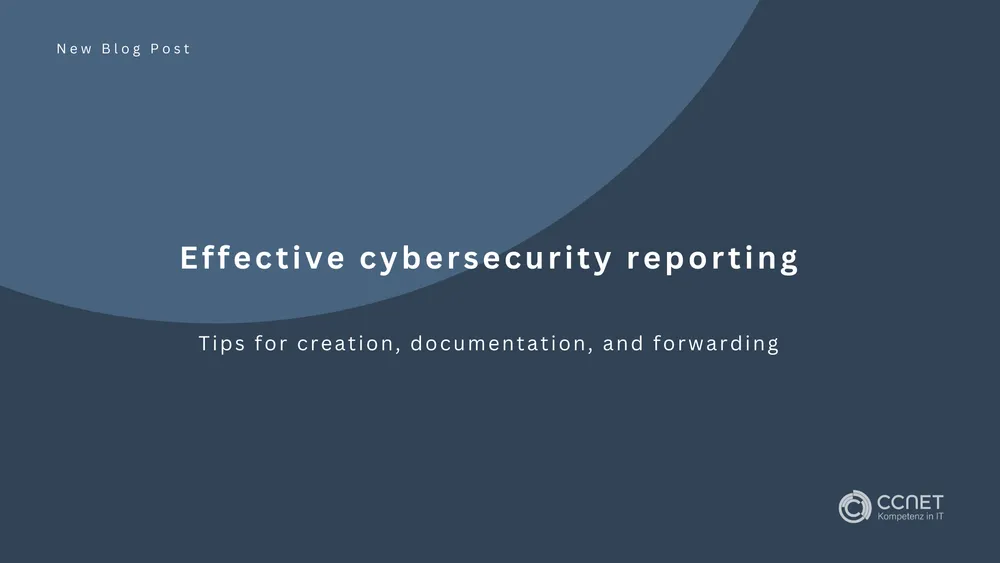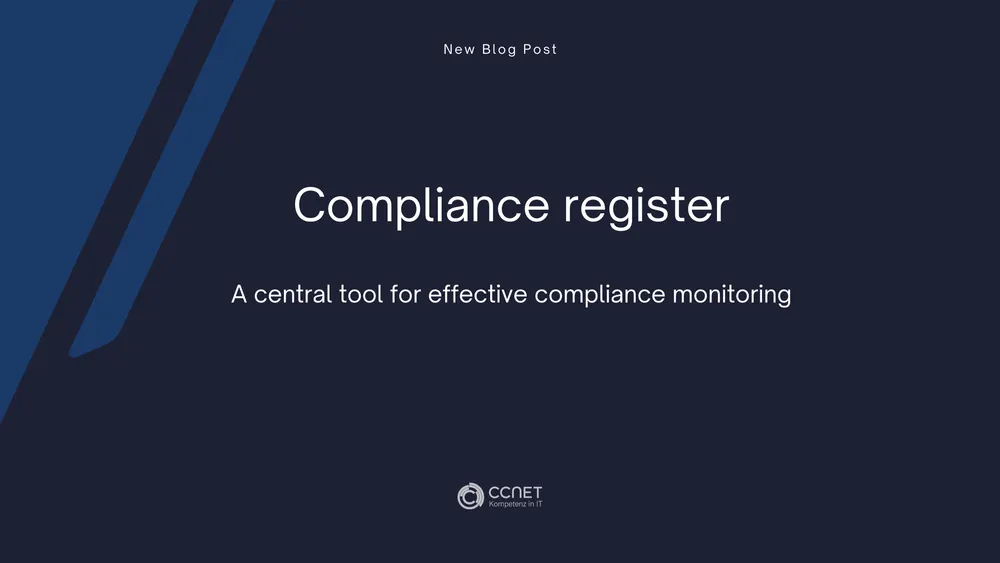
CCNet
Dec 23, 2024 • 3 min read

Cybersecurity in the Company: An Effective Training Plan to Raise Awareness Among All Employees
Cybersecurity is no longer just the responsibility of the IT department but affects every employee in the company. To ensure that all employees can recognize potential threats early and respond appropriately, companies are relying on comprehensive training programs. These programs are designed to minimize human error and create security awareness at all levels. A comprehensive cybersecurity program includes mandatory training, regular phishing simulations, continuous awareness campaigns, and ongoing review of training content to ensure the measures are effective and meet current threats.
Further information can be found here: IT-Consultation
Annual Mandatory Training: Cybersecurity as a Foundation
One of the most important measures is the annual mandatory training, which ensures that all employees understand the basic concepts of cybersecurity and follow the company's internal policies. This training typically lasts one day (8 hours) and provides a comprehensive introduction to topics such as password security, recognizing phishing attacks, and handling sensitive data.
Tip: It's helpful to divide the training into different thematic blocks to keep participants engaged. For example, the day can start with a welcome and introduction to the training content (08:00 - 09:00), followed by a detailed explanation of cybersecurity basics (09:00 - 10:30). Later in the day, company-specific policies and protocols are addressed (10:30 - 12:00). After the lunch break, practical exercises or scenarios can be offered to apply the concepts learned.
A solid tip for successfully conducting such training is to make the sessions interactive. Instead of giving a purely lecture-based presentation, quizzes or role-playing can help reinforce what has been learned. This ensures that employees actively participate in the learning process rather than just listening passively.
Monthly Phishing Simulations: Regularly Testing Vigilance
In addition to the annual training, it is crucial to keep employees continuously aware of potential threats. Monthly phishing simulations are an effective tool to test employees' alertness and ensure they can recognize malicious emails and respond correctly.
During these simulations, each employee is subjected to a phishing attack for 15 minutes. A realistically designed email is sent to everyone to check who falls for the attack and who recognizes it. After the simulation, participants receive immediate feedback on whether they responded correctly or not.
Tip: It’s important to keep the results of these phishing simulations anonymous and provide constructive feedback. No one should feel exposed, as the purpose of the exercise is to learn from mistakes and continuously improve detection skills. Repeated training on this topic is also helpful to ensure employees remain vigilant to such threats.
Monthly Awareness Campaigns: Highlighting Threats
In addition to phishing simulations, monthly awareness campaigns can be conducted to draw employees' attention to current threats. These campaigns can take various formats, including videos, newsletters, posters, or brief training sessions. Regular communication ensures that cybersecurity remains a constant focus in the workplace.
An example schedule for such campaigns could be as follows:
- 1st Week: Sending a newsletter or short video about a current threat or security measure.
- 2nd Week: Posters in key office areas highlighting important security aspects (e.g., "Watch out for suspicious emails").
- 3rd Week: A brief training session or webinar that focuses on current dangers.
- 4th Week: A quiz to test the newly acquired knowledge and encourage participation.
Tip: These campaigns should be short and concise. Avoid overwhelming employees with too much information; instead, focus on clear and understandable messages. A well-designed poster or short video can often be more effective than long texts.
Evaluation and Feedback: Measuring and Adjusting Training Success
Training alone is not enough – it’s important to measure its effectiveness and adjust the curriculum as needed. An evaluation should be conducted once a quarter to analyze the results of the training and simulations and gather feedback from employees. This provides insights into which topics may not yet be sufficiently understood and which content should be deepened or repeated.
Analyzing phishing simulations and gathering employee feedback help identify weaknesses in the awareness and training program. Based on these insights, the training team should make adjustments to continuously improve the program and respond to new threats.
Tip: When adjusting the training plan, consider that employees have different levels of knowledge. It may be useful to offer optional advanced courses for those who already have a higher level of cybersecurity knowledge, while basic concepts should be reinforced for others.
Conclusion: Strengthening Cybersecurity Through Continuous Training and Awareness
Cybersecurity requires not only technical measures but also the commitment of every employee. A well-structured training program, regular simulations, and awareness campaigns can significantly raise awareness and reduce the risk of human error. With a clear schedule and regular evaluation of the measures, you ensure that all employees are always up to date on security practices and contribute to protecting the company.
Regular training and awareness in cybersecurity ensure that cybersecurity is no longer just a task for the IT department but is embedded throughout the entire company.


